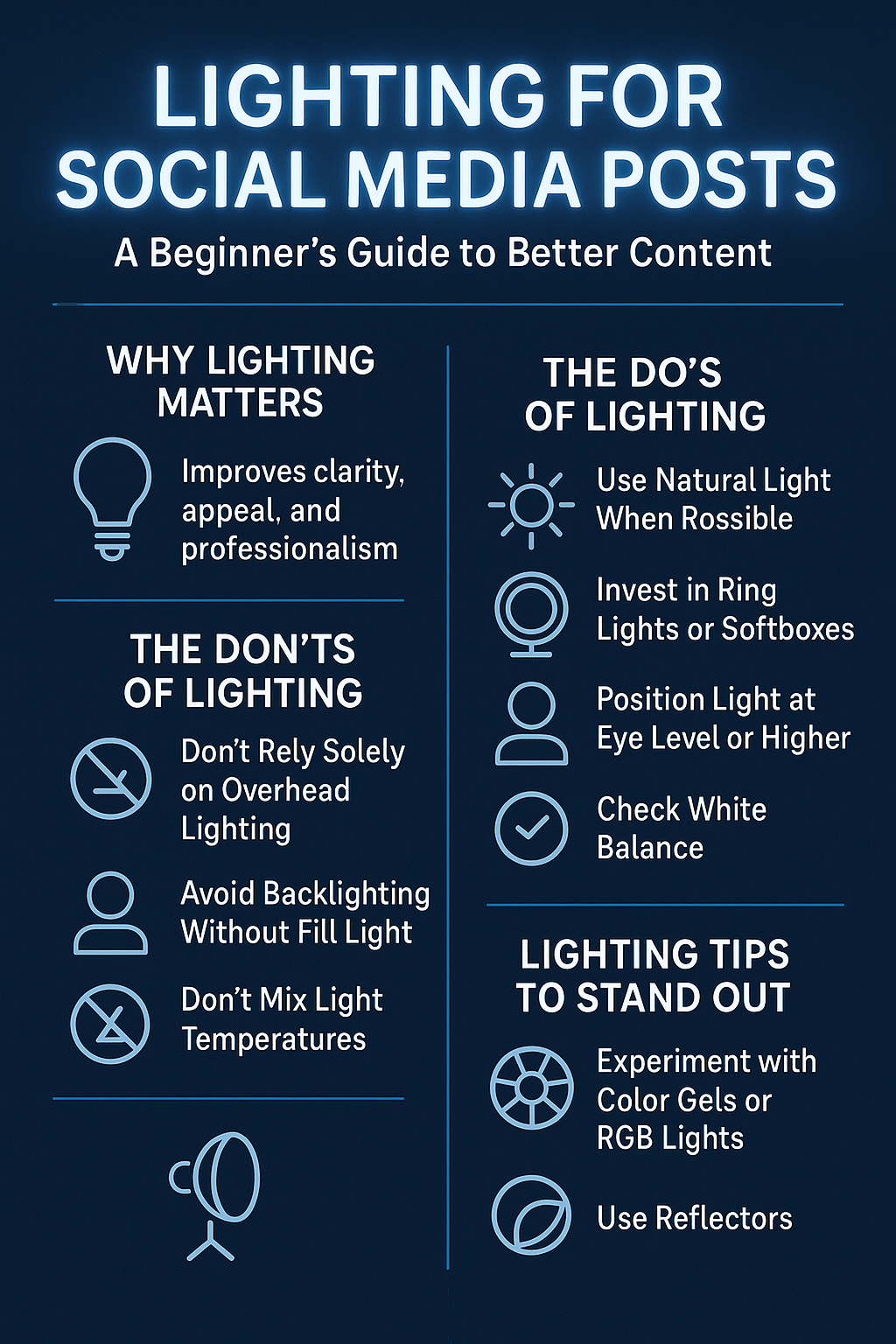Introduction
In the digital age, high-quality visuals are the backbone of successful social media engagement. One often overlooked yet essential element is lighting. Whether you're shooting videos, photos, or livestreams, proper lighting can dramatically improve the clarity, appeal, and professionalism of your content (Cordero, 2023).
1. Why Lighting Matters
Lighting affects everything—from skin tone to color accuracy to the overall mood of the shot. Research shows that viewers are more likely to engage with content that is bright, crisp, and visually appealing (HubSpot, 2023). Poor lighting can create shadows, distort colors, and reduce the perceived quality of your post, resulting in lower engagement and fewer shares (Sprout Social, 2024).
2. The Dos of Lighting
- Use Natural Light When Possible: The soft, even glow of daylight—especially during the "golden hour"—creates flattering and vibrant images (Digital Photography School, 2023).
- Invest in Ring Lights or Softboxes: These provide consistent, adjustable lighting that enhances facial features and reduces harsh shadows (Forbes, 2024).
- Position the Light at Eye Level or higher: This minimizes unflattering shadows under the eyes or chin (Cordero, 2023).
- Check White Balance: This ensures colors appear true to life, especially important for product photos or fashion posts (HubSpot, 2023).
3. The Don’ts of Lighting
- Don’t Rely Solely on Overhead Lighting: Ceiling lights often create dark eye sockets and uneven skin tones (Sprout Social, 2024).
- Avoid Backlighting Without Fill Light: Standing in front of a bright window without a front-facing light source will turn you into a silhouette (Forbes, 2024).
- Don’t Mix Light Temperatures: Combining warm and cool lights can result in awkward, unnatural hues (Digital Photography School, 2023).
4. Lighting Tips to Stand Out
- Experiment with Color Gels or RGB lights for a creative, mood-driven look—great for music, fashion, or artistic content (Social Media Examiner, 2023).
- Use Reflectors to bounce natural or artificial light and fill shadows, creating a more polished look.
- Lighting Apps & Tools: Consider apps that help control exposure, brightness, and contrast to enhance lighting even after shooting (Cordero, 2023).
Conclusion
Mastering lighting doesn’t require expensive equipment—it starts with understanding how light shapes the story of your content. By following these simple lighting do’s and don’ts, social media creators can boost the quality of their visuals, enhance their online presence, and better connect with audiences.
References
Cordero, R. (2023). How to light your content like a pro. Social Media Today.
Digital Photography School. (2023). The importance of natural light in photography.
Forbes. (2024). The Best Ring Lights for Social Media Influencers in 2024.
HubSpot. (2023). The state of social media marketing: Visual trends.
Social Media Examiner. (2023). Creative lighting techniques for eye-catching posts.
Sprout Social. (2024). Social Media Content Tips: Lighting, Composition, and Engagement.



Comments ()